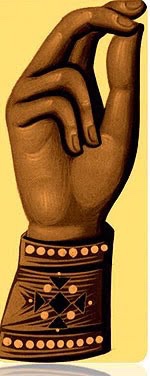
Light is associated with the coming of Christ. In the Old Testament, the prophet Isaiah points forward to the coming of the Messiah in the world.
“The people who walked in darkness have seen a great light; those who dwelt in a land of deep darkness, on them has light shined.” (Isaiah 9:2).
Some of these passages we read during Advent, the period before Christmas because Christ is the light that dispels darkness. At Christ’s birth, there was light in heaven.
“And an angel of the Lord appeared to them, and the glory of the Lord shone around them, and they were filled with fear.” (Luke 2:9)
During His earthly ministry, at the Transfiguration Christ appeared surrounded by light. “And after six days Jesus took with him Peter and James and John his brother and led them up a high mountain apart. And he was transfigured before them, and his face shone like the sun, and his garments became white as light.” (Mt 17:1-2)
Finally, Christ says of Himself
“…Jesus spoke to them, saying, “I am the light of the world; he who follows me will not walk in darkness, but will have the light of life.” (John 8:12)
So God is light. Jesus Christ is light and before them, all darkness, gloom, negativity disappear.
Interestingly, there is a connection between the dikiri and trikiri and the sign of the cross. As Orthodox Christians, when we make the sign of the cross, we join our thumb, index and middle finger together and fold the ring finger and pinky into the palm. The thumb, index finger, and middle finger represent the three persons of the Holy Trinity, just as the trikiri does, and the ring finger and pinky represent the two natures of Christ, divine, and human, just as the dikiri does. So every time we make the sign of the cross, we are confession our faith in the two fundamental dogmas of the Orthodox Church. The Trinity and the Incarnation, that God is in three persons and that Jesus Christ is human and divine.
We have to remember that nothing we say or do in the church is just for show. The Orthodox Church and the Orthodox Liturgy are rich symbol systems. A person could spend a lifetime studying the symbols and never exhaust their meaning.
The clergy does not wear vestments for show or to make themselves important, but rather to show that the church and the Liturgy are foretastes of the glory of the Kingdom of Heaven. Our experience of the Kingdom of heaven does not begin after death or after the Second Coming. We enter the Kingdom of Heaven when we are baptized and then receive Holy Communion. It is to symbolize this that the clergy wears vestments.
Another aspect of Orthodox Liturgy is the use of incense. The use of incense signifies our prayers ascending into heaven Incense was used in the Old Testament. For example
“… and when Aaron sets up the lamps in the evening, he shall burn it, a perpetual incense before the Lord throughout your generations.” (Exodus 30:8)
“Let my prayer be counted as incense before thee, and the lifting up of my hands as an evening sacrifice.: (Psalm 141:2)
This Psalm is used at the evening Vespers service in the Orthodox Church. The choir sings this psalm while the priest or deacon censes. So, our prayers rise to heaven like the incense and the words of the psalm are united with the action of the priest. The use of incense will continue in the Kingdom of Heaven, as we see in the Book of Revelation.
“And another angel came and stood at the altar with a golden censer, and he was given much incense to mingle with the prayers of all the saints upon the golden altar before the throne;…” Revelation 8:3)
Again, all of this shows that nothing we say or do in church is arbitrary, but is a richly woven tapestry of meaning.
Fr. John
